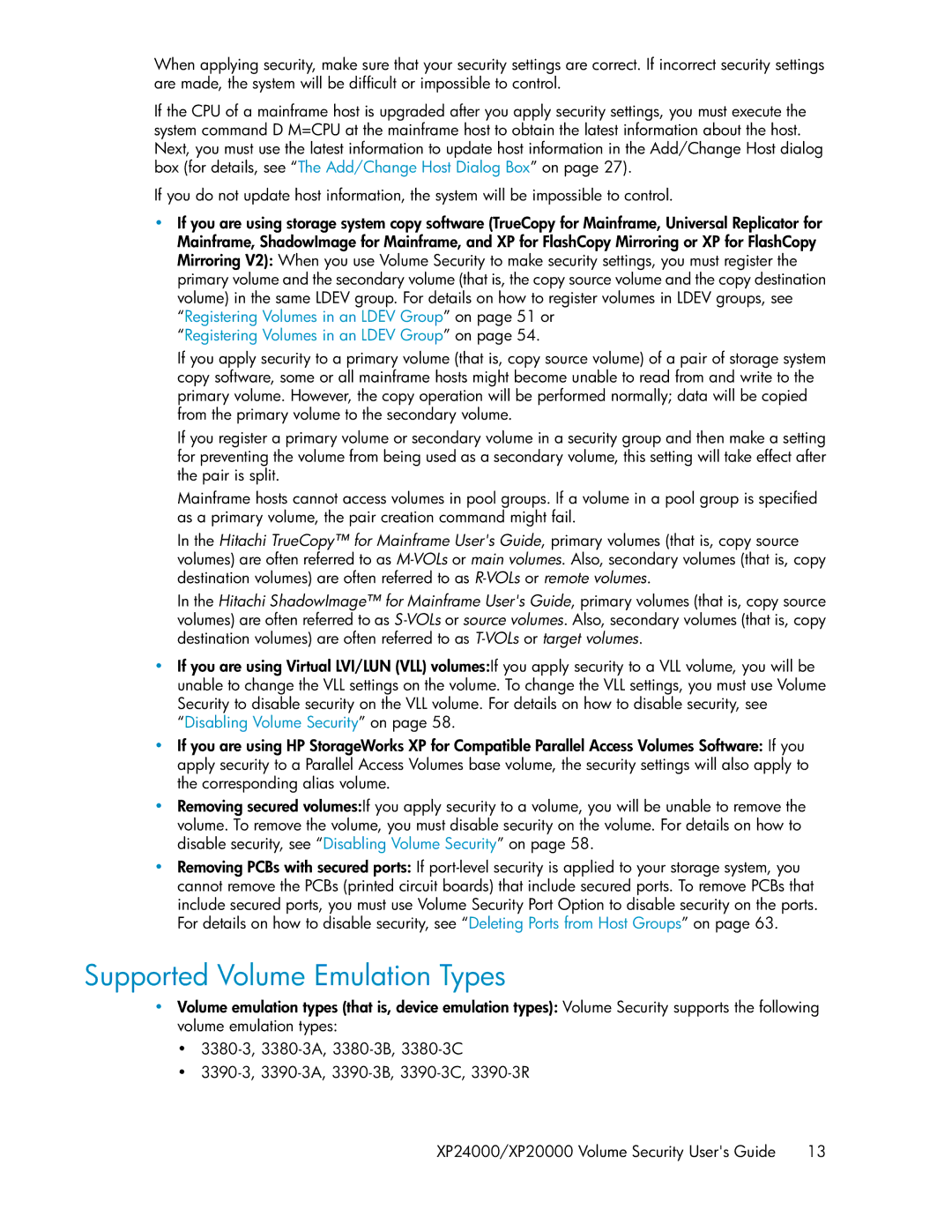When applying security, make sure that your security settings are correct. If incorrect security settings are made, the system will be difficult or impossible to control.
If the CPU of a mainframe host is upgraded after you apply security settings, you must execute the system command D M=CPU at the mainframe host to obtain the latest information about the host. Next, you must use the latest information to update host information in the Add/Change Host dialog box (for details, see “The Add/Change Host Dialog Box” on page 27).
If you do not update host information, the system will be impossible to control.
•If you are using storage system copy software (TrueCopy for Mainframe, Universal Replicator for Mainframe, ShadowImage for Mainframe, and XP for FlashCopy Mirroring or XP for FlashCopy Mirroring V2): When you use Volume Security to make security settings, you must register the primary volume and the secondary volume (that is, the copy source volume and the copy destination volume) in the same LDEV group. For details on how to register volumes in LDEV groups, see “Registering Volumes in an LDEV Group” on page 51 or
“Registering Volumes in an LDEV Group” on page 54.
If you apply security to a primary volume (that is, copy source volume) of a pair of storage system copy software, some or all mainframe hosts might become unable to read from and write to the primary volume. However, the copy operation will be performed normally; data will be copied from the primary volume to the secondary volume.
If you register a primary volume or secondary volume in a security group and then make a setting for preventing the volume from being used as a secondary volume, this setting will take effect after the pair is split.
Mainframe hosts cannot access volumes in pool groups. If a volume in a pool group is specified as a primary volume, the pair creation command might fail.
In the Hitachi TrueCopy™ for Mainframe User's Guide, primary volumes (that is, copy source volumes) are often referred to as
In the Hitachi ShadowImage™ for Mainframe User's Guide, primary volumes (that is, copy source volumes) are often referred to as
•If you are using Virtual LVI/LUN (VLL) volumes:If you apply security to a VLL volume, you will be unable to change the VLL settings on the volume. To change the VLL settings, you must use Volume Security to disable security on the VLL volume. For details on how to disable security, see “Disabling Volume Security” on page 58.
•If you are using HP StorageWorks XP for Compatible Parallel Access Volumes Software: If you apply security to a Parallel Access Volumes base volume, the security settings will also apply to the corresponding alias volume.
•Removing secured volumes:If you apply security to a volume, you will be unable to remove the volume. To remove the volume, you must disable security on the volume. For details on how to disable security, see “Disabling Volume Security” on page 58.
•Removing PCBs with secured ports: If
Supported Volume Emulation Types
•Volume emulation types (that is, device emulation types): Volume Security supports the following volume emulation types:
•
•
XP24000/XP20000 Volume Security User's Guide | 13 |
